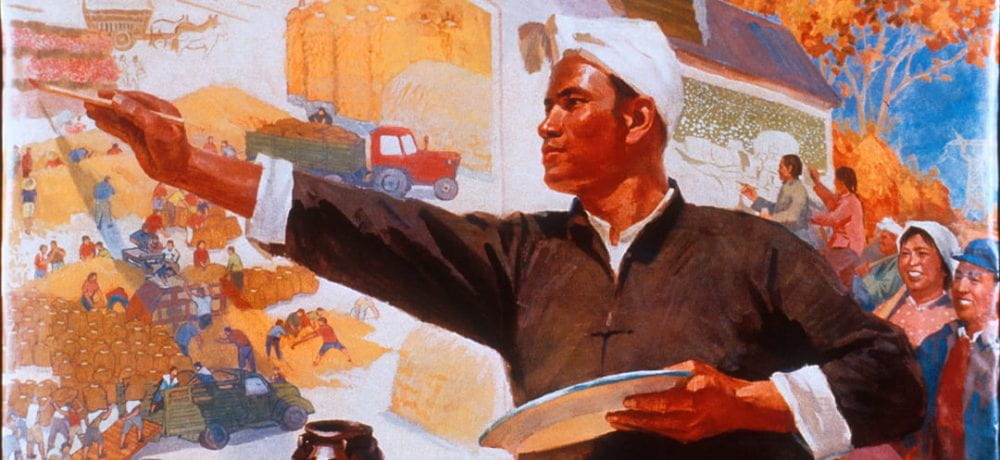Ding Cong (1916-2009) was a political cartoonist and son of Ding Song, a prominent member of Shanghai art circles, as well as a cartoonist himself. His father did not want him to become a cartoonist, for he thought the profession was too dangerous and not lucrative enough. Song even insisted that no brushes or paper were to be given to Cong, however Cong still found ways to create art (Hawks 2017, 17).
Ding Cong’s first noticed works were 24 illustrations for Lu Xen’s (1881-1936) famous short-story, “The True Story of Ah Q”, in 1943, when he was just 27 years old. Ding had a strong identification to Lu Xen’s work and his aspirations to usher in social change, and this was apparent through his entire artistic career (Hawks 2017, 18).
In 1957, he was deemed a Rightist, and was banned from producing art, even privately, as well as being removed from his editor position at People’s Pictorial journal. Shortly after, he was separated from his wife and infant son, and exiled to a labor camp in northern China. He was rehabilitated in 1979, and by 1995, he enter his second peak in his art career. The smooth transition was credited to his continued production of art, even while exiled (Hawks 2017, 18).
Ah Q’s Execution, 1943


